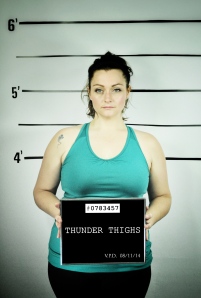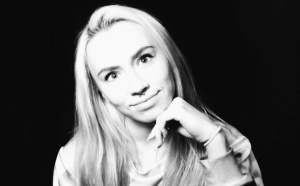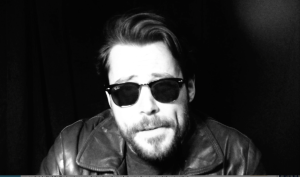click here to read about the artist
GUILTY OF– SUMMER/FALL 2014
… loves junk food
… trends don’t fit me
Read about TRENDS DON’T FIT ME
… not bathing suit material
… not living up to mom’s expectations
About NOT LIVING UP TO MOM’S EXPECTATIONS
… ignoring the numbers

… thunder thighs
Read about IGNORING THE NUMBERS and THUNDER THIGHS
… watching too many makeup tutorials online
… not as pretty as you
THE SELFIE PROJECT– SPRING 2014
180 Minute Selfie
gettin ready to head out with the gurlz- just took 3 hours- lol
Gender Bender Selfie
who can tell that it’s me?
We are What We Consume Selfie
Sunday morning- enjoying my Starbucks in the Spring sun- delish
Perfect365 Selfie
perfect smile for a perfect day- heading out to a meeting at work
Selfie Plus
just hangin with the totem pole guy at Squamish Nation urban reserve
Las Meninas Selfie
taking the last selfie of the day on the late ferry back to Vancouver- what a weekend 🙂
At the Bar Selfie
letting my wild side come out at the bar- lol
Ugly Selfie
my ‘it’s too late in the day’- face … don’t ask
THE SELFIE SCREENTESTS PROJECT- SPRING 2014
For my third tutorial I partnered with Brian Ganter from the English department, as I had taken several lectures with him during my four years at Capilano University and liked his interest in film, media, and gender-related topics. Building further on the research and work of my other two tutorials, we took an approach of looking at visual culture more closely, focusing specifically on works of art and the image in particular. Supplementing the readings I was doing, I had a chance to look at a wide variety of artist’s works, which greatly inspired me for the projects of this tutorial. I enjoyed the visual aspect of this tutorial and one of the assignments even sent me to the Vancouver Art Gallery to get inspired for a self-directed piece of work, which deconstructed the idea of ‘landscapes.’ I also really enjoyed watching the many assigned films, including Slavoj Žižek’s Pervert’s Guide to Ideology, which the relationships between ideology and visual culture.

When the time came to begin working on my final project for this tutorial, I wanted to focus on the selfie phenomenon that is so popular at this time, while I was also working on a selfie-related project in my other tutorial. We came up with the idea of a ‘Selfie Curation’ and I asked the Capilano University community to submit their own selfies so that I could analyze them based on the research I had done. Unfortunately, due to a lack of submissions, we had to abandon this project about two weeks later. While this was disappointing, it pushed me to think about something else and I believe that the resulting project is better than the ‘Selfie Curation’ would have been.

Using Andy Warhol’s Screen Tests from the 1960s as inspiration, I proposed to create a short film, which would consist of ‘Selfie Screentests.’ I created a one-way mirror, with my cell phone mounted to the other side. With a small set up of a black backdrop, a single light, and a tripod I set up at two locations at Capilano University and asked passerbys to participate in my project. I provided my subjects with a little background of my project and the tutorial and had them sign an image release form. Out of 21 participants I chose 15 subjects for the finished product. I edited the film in various ways, slowing down the speed, changing the colour to a high contrast black and white (similar to Warhol), removing the sound, and adding a slow soundtrack. I wanted to keep the look of my Selfie Screentests similar to Warhol’s original, yet I wanted to make visible the selfie element by adding the mirror and having the subjects see themselves. I asked all the subjects to look at and interact with their reflection, giving them no other directions- they were free to do what they felt was appropriate, as I wanted to record how people interact with their own image. I find the finished result quite fascinating and weirdly mesmerizing, as it allows the viewer to become part of an intimate moment between the subject and their own reflection. Being able to see on film how the introduction of technology and the maker of the film plays into this dynamic is also noteworthy; the subjects were aware that they were being filmed and had agreed to participate, yet as the film reveals, some were more comfortable with this than others and this poses interesting further questions.

See the full video here:
PICTURE PERFECT– FALL 2013
Picture Perfect was the result of my first tutorial and with this short documentary I started to explore some questions women may ask themselves when they encounter different types of media.
REISE – FALL 2013
Reise is my final project submission for a fourth year English class, in which I share my own struggle with gender inequality.
WHO HAS MADE MY BODY?– SPRING 2014
I created Who has made my Body? for an assignment for a third year English course about Electronic Literature.
TAC– SPRING 2013
TAC was another assignment submission for my third year Electronic Literature class.
The work is based on a piece of Electronic Literature called my body- a Wunderkammer by Shelley Jackson, which can be seen here:















